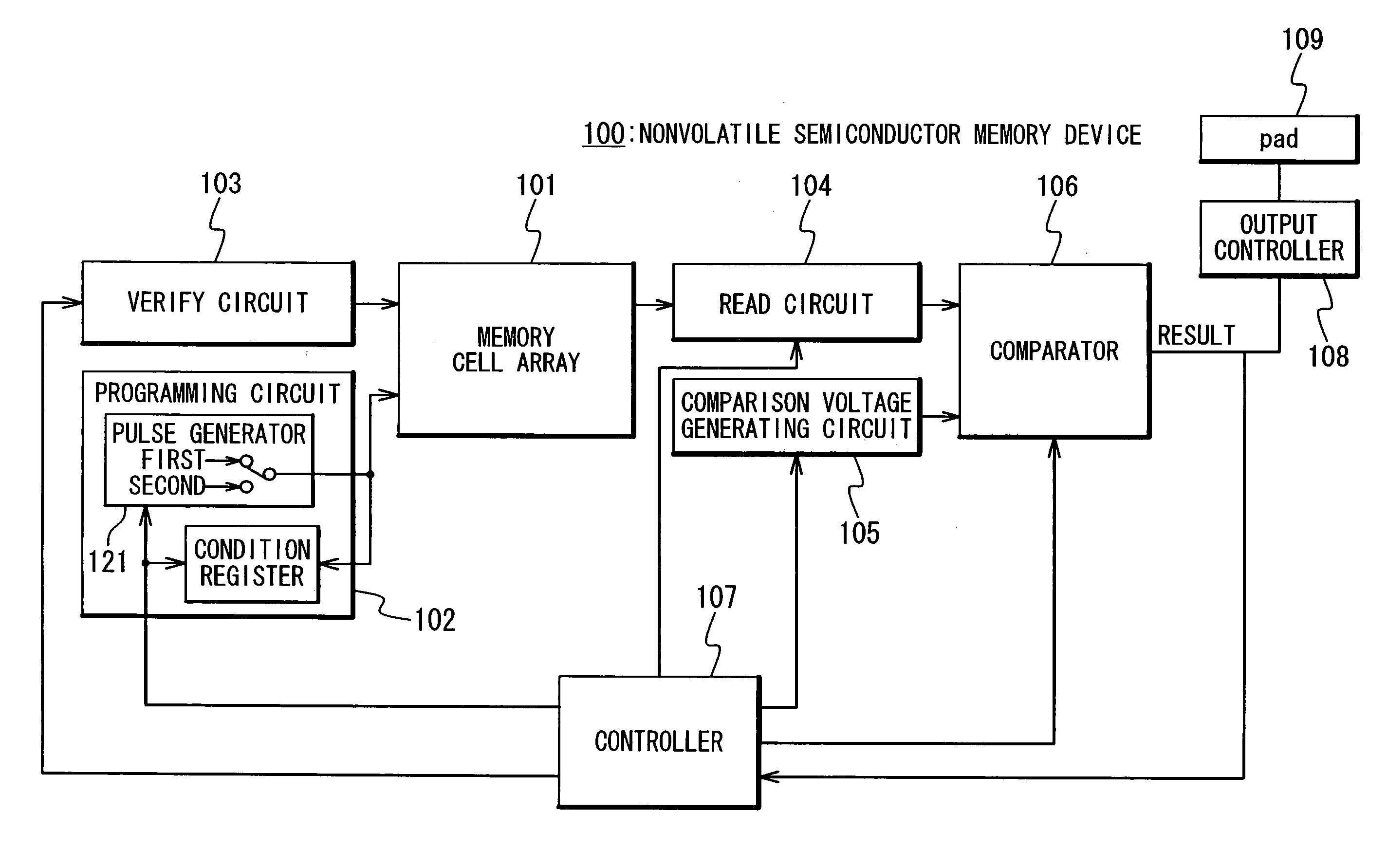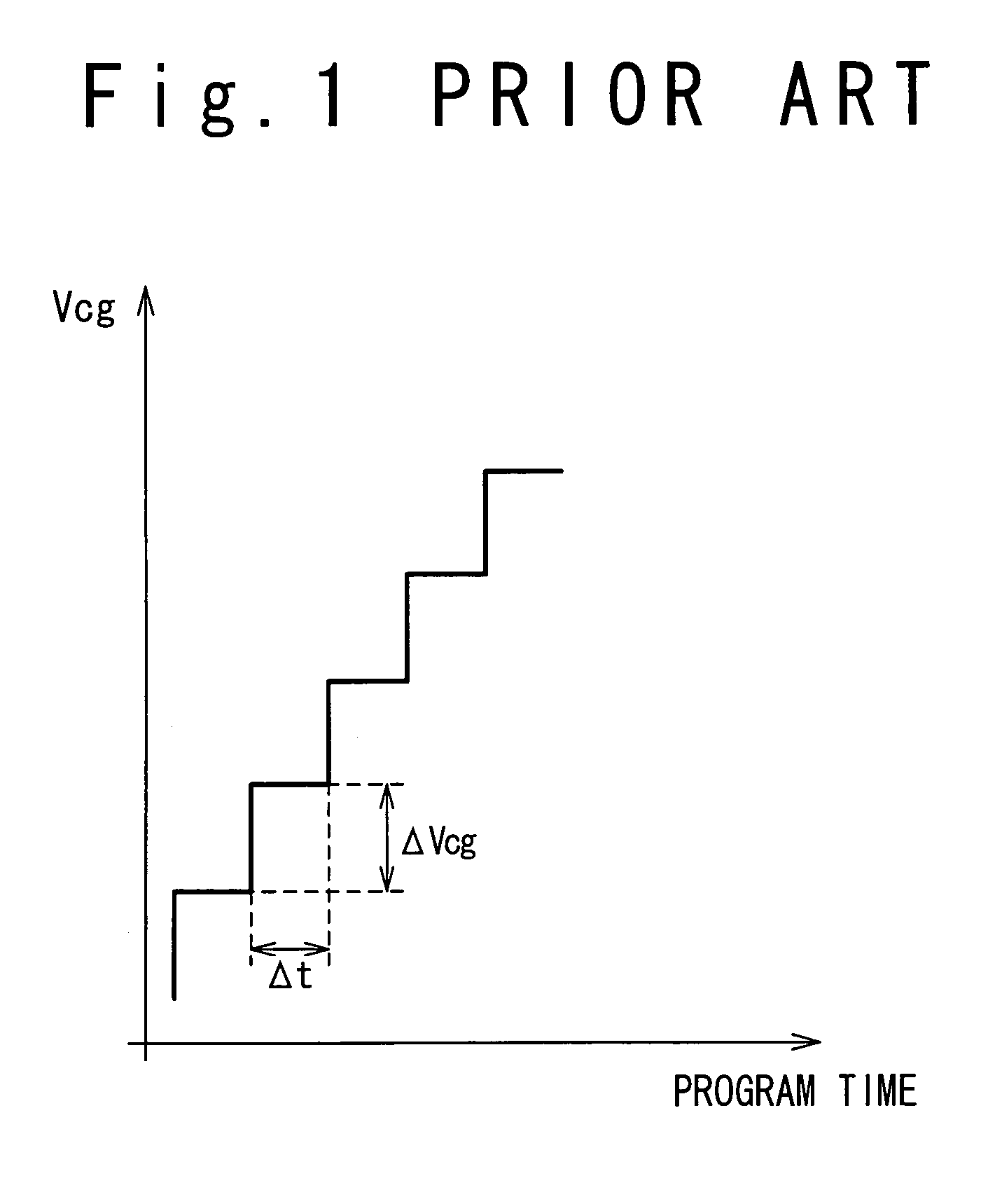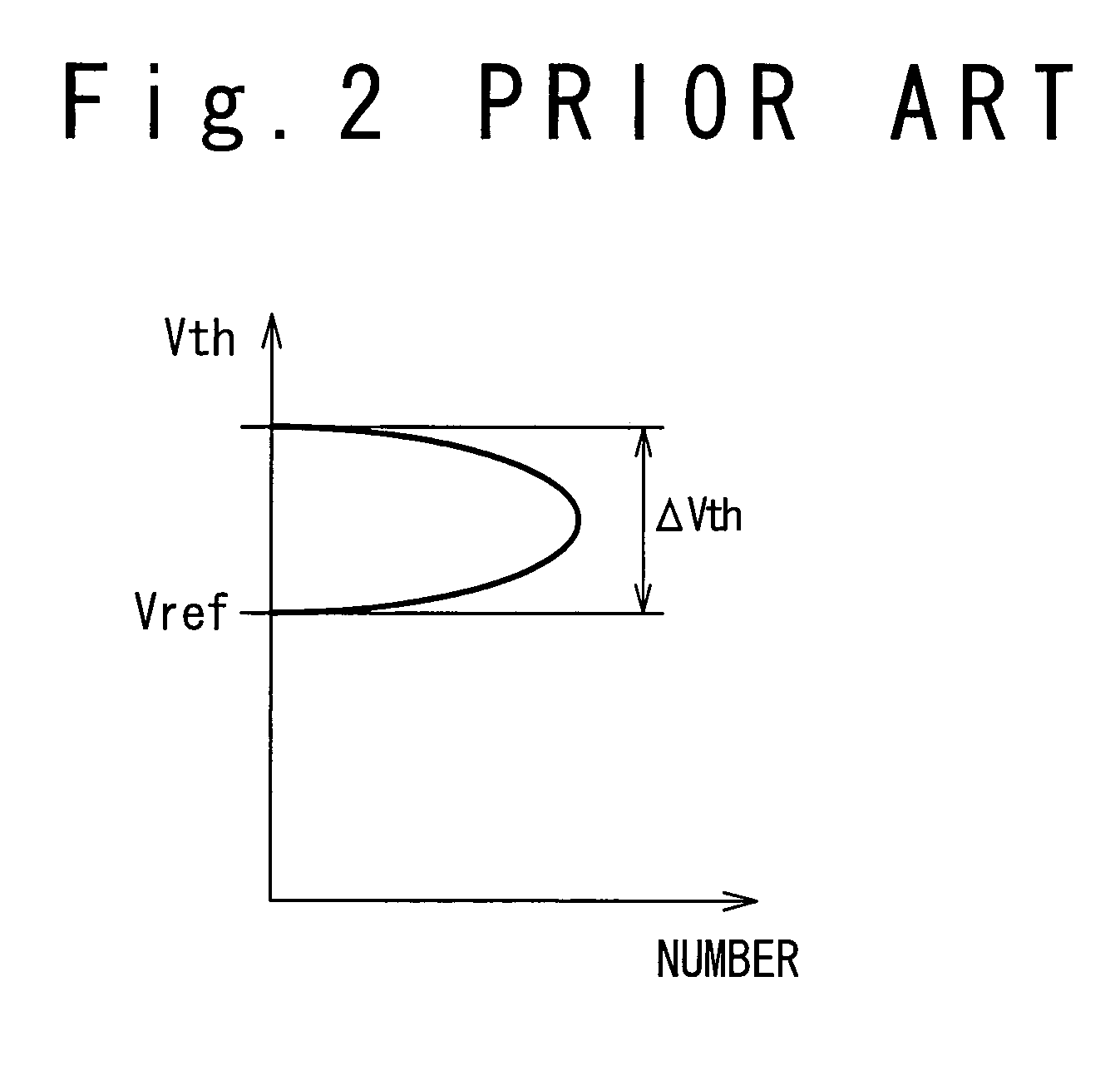Nonvolatile semiconductor memory device and method of programming in nonvolatile semiconductor memory device
a nonvolatile semiconductor and memory device technology, applied in the direction of digital storage, instruments, transistors, etc., can solve the problems of increasing the time required for programming, deteriorating reading accuracy, and increasing the number of programming operations, so as to improve the accuracy of read operations.
- Summary
- Abstract
- Description
- Claims
- Application Information
AI Technical Summary
Benefits of technology
Problems solved by technology
Method used
Image
Examples
Embodiment Construction
[0039]Embodiments of the present invention will be described below with reference to the attached drawings. FIG. 6 shows a nonvolatile semiconductor memory device 100 including a programming device according to an embodiment of the present invention. The nonvolatile semiconductor memory device 100 has a memory cell array 101, a programming circuit 102 (writing circuit), a verify circuit 103, a read circuit 104, a comparison voltage generating circuit 105, a comparator 106, and a controller 107. The programming circuit 102, the verify circuit 103, the read circuit 104, the comparison voltage generating circuit 105, the comparator 106, and the controller 107 configure the programming device.
[0040]The memory cell array 101, which is the target of the programming, is configured as a flash memory cell array. The memory cell array 101 includes a plurality of memory cells which are arrayed in a matrix form. Each of the memory cells has a stacked gate structure (floating gate structure). Th...
PUM
 Login to View More
Login to View More Abstract
Description
Claims
Application Information
 Login to View More
Login to View More - R&D
- Intellectual Property
- Life Sciences
- Materials
- Tech Scout
- Unparalleled Data Quality
- Higher Quality Content
- 60% Fewer Hallucinations
Browse by: Latest US Patents, China's latest patents, Technical Efficacy Thesaurus, Application Domain, Technology Topic, Popular Technical Reports.
© 2025 PatSnap. All rights reserved.Legal|Privacy policy|Modern Slavery Act Transparency Statement|Sitemap|About US| Contact US: help@patsnap.com



